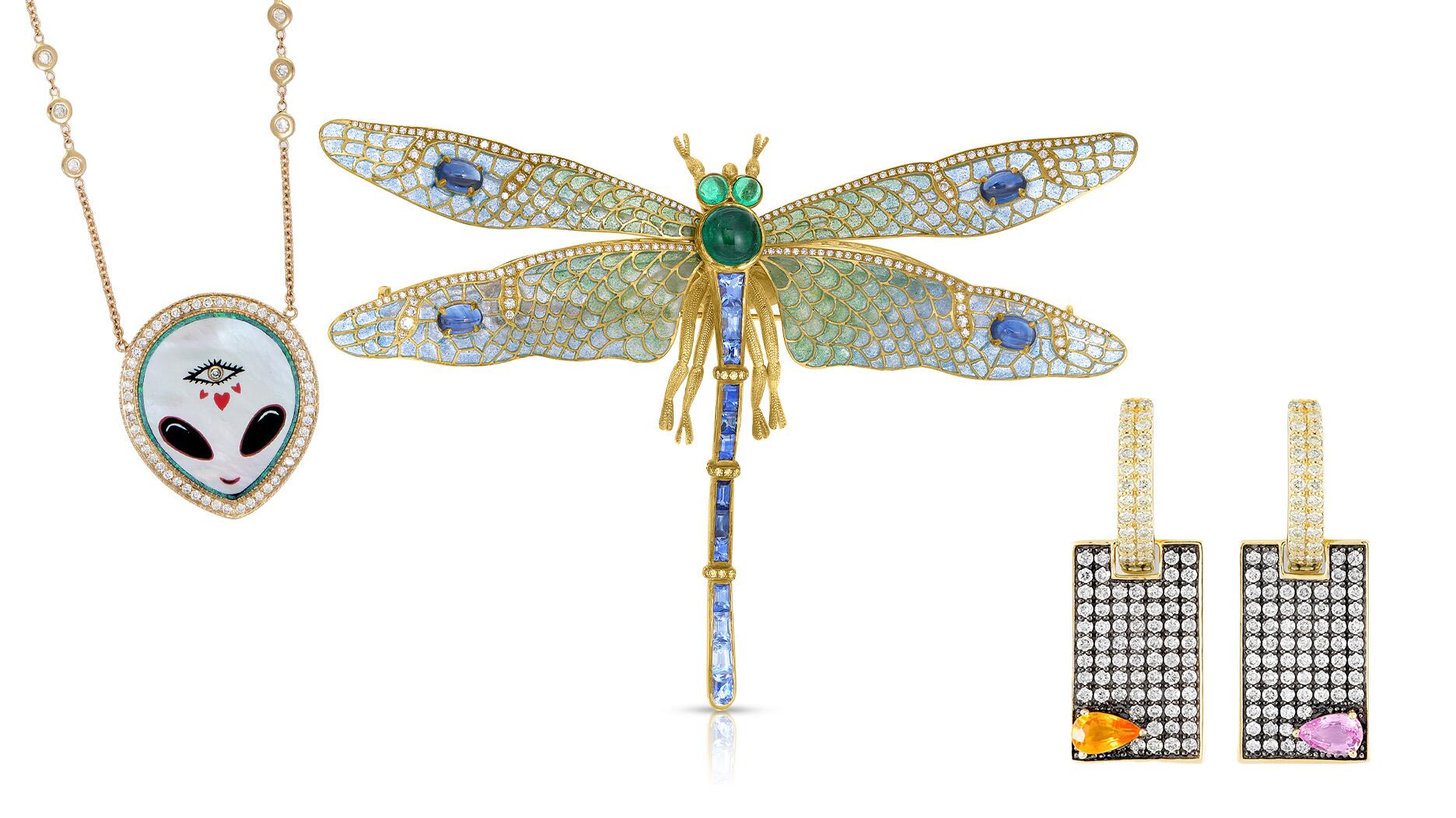The luxury goods company said founder Ippolita Rostagno will remain at the brand’s helm.
Gold Jewelry from the Iron Age Found in Britain
Two men with metal detectors unearthed what is thought to be the oldest Iron Age gold work ever found in Great Britain.

Leekfrith, England--Two men who were metal-detecting in a field in Leekfrith, a civil parish in Staffordshire, England, managed to dig up some important buried treasure.
Mark Hambleton and Joe Kania found what is being referred to as the “Leekfrith Torcs”--three gold necklaces and one bracelet that date to the Iron Age, approximately 2,500 years ago.
The British Museum believes the pieces to be the oldest Iron Age gold work ever found in Great Britain, estimating the work’s origin to date to about 400-250 BC.
“Iron Age jewelry is rare,” Lori Ettlinger Gross, a jewelry author, historian and MA candidate in the History of Design and Curatorial Studies at The New School, said in an interview with National Jeweler.
Gross also noted that much will be learned from where the jewelry was found.
“The thing that is most significant about this discovery is the evidence that it supports,” she said. “As people, as a culture and as individuals, jewelry was an apparent display of the self. It was made and worn because someone wanted to have the world see them a certain way, and in a way that perhaps stated wealth, beauty, or power.”
Julia Farley, curator of British & European Iron Age Collections at the British Museum, told the BBC: “Piecing together how these objects came to be carefully buried in a Staffordshire field will give us an invaluable insight into life in Iron Age Britain. The torcs were probably worn by wealthy and powerful women, perhaps people from the Continent who had married into the local community.”
Both Farley and Gross commented on the excellent condition in which the torcs were found.
Farley told National Jeweler, “I was completely stunned when I saw the torcs for the first time. They’re beautiful objects, and the skill which has gone into making them is incredible.”
Each torc was found about one meter (3.28 feet) apart and not far below the ground.
“As people, as a culture and as individuals, jewelry was an apparent display of the self. It was made and worn because someone wanted to have the world see them a certain way, and in a way that perhaps stated wealth, beauty, or power.” --Jewelry historian Lori Ettlinger GrossHambleton and Kania had permission from the property owner to search the fielded area and upon discovery, turned their finds in to the Portable Antiquities Scheme.
An investigation determined
The torcs have a precious metal content of 80 percent and weigh between 1 and 8 ounces apiece.
All treasure is property of the Crown in Great Britain, but Hambleton and Kania will still receive some sort of finder’s fee that, according to the BBC, they will split with the property owner.
The Leekfrith Torcs are currently on view at the Potteries Museum and Art Gallery in Stoke but will then head to the British Museum for valuation, before becoming available for sale to museums, the finders or landowner of the field where they were discovered.
Gross concluded, “Finding such early jewelry that dates to pre-history is akin to finding a needle in eons of haystacks.”
In 2009, the largest stockpile of Anglo-Saxon gold ever found, dubbed the Staffordshire Hoard, was also located by metal detector some 50 miles from where the Leekfrith torcs were discovered.
The Latest

Laura Burdese, who joined the Italian luxury brand in 2022, will take on the role in July.

The National Jeweler editors revisit the most noteworthy industry happenings and design trends from 2025.

How Jewelers of America’s 20 Under 40 are leading to ensure a brighter future for the jewelry industry.

Need a gift for the cat lover who has everything? Look no further than our latest Piece of the Week.


It purchased the “Grosse Pièce,” an ultra-complicated Audemars Piguet pocket watch from the ‘20s, for a record-breaking price at Sotheby’s.

The lab-grown diamond grower now offers custom engagement and fashion jewelry through its Kira Custom Lab Jewelry service.

Roseco’s 704-page catalog showcases new lab-grown diamonds, findings, tools & more—available in print or interactive digital editions.

Chandler got his start at Michelson Jewelers and has served as DCA president and CEO since 2001. He will retire at the end of the month.

The boutique is slated to open this week inside Terminal 8, offering pre-owned Rolex watches and more to international travelers.

Sponsored by Digital Monitoring Products

The special-edition egg pendant ingested in a New Zealand jewelry store was recovered after a six-day wait.

Associate Editor Natalie Francisco plays favorites with Piece of the Week, selecting a standout piece of jewelry from each month of 2025.

The “Love and Desire” campaign is inspired by the magic that follows when one’s heart leads the way, said the brand.

Two awardees will receive free tuition for an educational course at the Swiss lab, with flights and lodging included.

Berta de Pablos-Barbier will replace Alexander Lacik at the start of January, two months earlier than expected.

Sotheby’s held its first two jewelry sales at the Breuer building last week, and they totaled nearly $44 million.

Winners will receive free registration and lodging for its fourth annual event in Detroit.

Here are six ideas for making more engaging content for Instagram Reels and TikTok, courtesy of Duvall O’Steen and Jen Cullen Williams.

The honorees include a notable jewelry brand, an industry veteran, and an independent retailer.

Carlos Jose Hernandez and Joshua Zuazo were sentenced to life without the possibility of parole in the 2024 murder of Hussein “Sam” Murray.

Yood will serve alongside Eduard Stefanescu, the sustainability manager for C.Hafner, a precious metals refiner in Germany.

The New Orleans jeweler is also hosting pop-up jewelry boutiques in New York City and Dallas.

Set in a Tiffany & Co. necklace, it sold for $4.2 million, the highest price and price per carat paid for a Paraíba tourmaline at auction.

The jeweler’s “Deep Freeze” display showcases its iconic jewelry designs frozen in a vintage icebox.

Take luxury gifting to new heights this holiday season with the jeweler’s showstopping 12-carat sphene ring.

This year's theme is “Unveiling the Depths of the Ocean.”





























